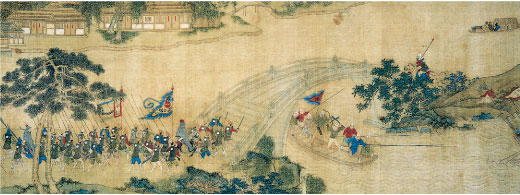东京大学史学研究所是研究从古代到明治维新日本前现代历史的历史文献的研究机构。使命是从日本和海外的馆藏中收集和分析各种历史文献,并将其作为日本历史文献的重要收藏进行汇编和出版,以造福学术界和社会。研究所历史悠久,其起源可以追溯到江户时代的日本研究所(和岳讲团所)。明治政府在明治时代的第二年(1869年)接管了该研究所的运作,并开始了史学事业。该研究所随后被转移到帝国大学,该大学采用了目前编纂和研究日本史料的风格。从1901年出版的《大日本史》和《大日本文条》的第一卷开始,总共出版了1200多卷日本史料和档案。
史学研究所积极努力扩大研究范围,创新传播信息的方式。1997年成立了视觉来源研究中心,对画卷、古代和中世纪庄园地图和旧照片等图片来源进行全面研究。前现代日本资料数字化国际中心成立于2006年,旨在扩展自1980年代以来建立和发展的Siryohensansho历史信息处理系统(SHIPS),并开创历史信息学的新领域。研究所为日本历史的国际化做出贡献,例如对海外持有的日本史料的调查以及日本历史信息的国际传播。通过这些活动深化与包括中国、韩国和俄罗斯在内的不同国家持有史料或从事史学的海外机构的合作。自2009年以来,史学研究所被认证为“将日本史料转化为研究资源的研究中心”,促进了与日本各地的研究人员,博物馆和地方当局的合作研究,并将这些合作的结果作为共同使用的研究资源。
史学研究所旨在向所有对历史感兴趣的人提供与历史资料有关的各种信息。除了史学工作外,附属研究人员还致力于通过各种活动传播他们的研究成果,从个人研究人员或合作团队的研究到向公众开放的大学教育和推广讲座。研究支援部门,包括负责管理和利用书籍和历史资料的图书馆、配备先进技术和专业知识的保育实验室以及监督整个研究所运作的行政办公室,共同支持研究系统。
史学研究所作为日本史学研究的中心机构,不仅奠定了基础,而且在历史和史学研究的最前沿,以传统为基础,引进最先进的技术,推动研究工作。

The Institute of History of the University of Tokyo is a research institute that studies historical documents from ancient times to the pre-modern history of Japan during the Meiji Restoration. Our mission is to collect and analyze various historical documents from collections in Japan and overseas, and to compile and publish them as an important collection of Japanese historical documents for the benefit of academia and society. The Institute has a long history, and its origins can be traced back to the Japanese Research Institute of the Edo Period (Wadakodoko). The Meiji government took over the operation of the institute in the second year of the Meiji era (1869) and started the historiography business. The institute was then transferred to the Imperial University, which adopted the current style of compiling and studying Japanese historical materials. We have published more than 1,200 volumes of Japanese historical materials and archives, starting with the first volume of the Great Japanese History and the Great Japanese Bunteo, published in 1901.
The Institute of History is actively trying to expand the scope of research and innovate ways of disseminating information. The Centre for the Study of Visual Sources was established in 1997 to conduct a comprehensive study of pictorial sources such as scrolls, maps of ancient and medieval estates and old photographs. The International Center for the Digitization of Pre-Modern Japanese Data was established in 2006 with the aim of expanding the Siryohensansho Historical Information Processing System (SHIPS) established and developed since the 1980s and to open up a new field of historical informatics. The Institute contributes to the internationalization of Japanese history, such as the investigation of Japanese historical materials held overseas and the international dissemination of Japanese historical information. These activities deepen cooperation with overseas institutions that hold historical materials or engage in historiography in different countries, including China, South Korea and Russia. Since 2009, the Institute of Historiography has been accredited as a "research center for transforming Japanese historical materials into research resources", promoting collaborative research with researchers, museums and local authorities throughout Japan, and making the results of these collaborations available as research resources for common use.
The Institute of History aims to provide all who are interested in history with all kinds of information relating to historical data. In addition to their historical work, affiliated researchers work to disseminate their research through a variety of activities, from individual researchers or collaborative teams to university education and extension lectures that are open to the public. The research system is supported by the research Support Department, which includes a library for the management and use of books and historical materials, a conservation laboratory equipped with advanced technology and expertise, and an administrative office overseeing the operations of the whole Institute.
As the central institution for the study of Japanese history, the Institute of Historiography not only laid the foundation, but also promoted the research work at the forefront of history and historiography research by introducing the most advanced technology based on tradition.